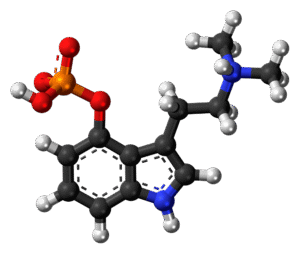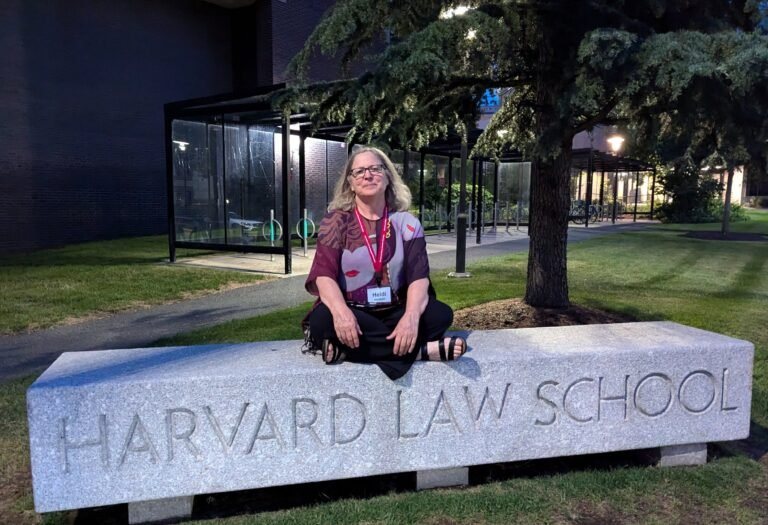When most people think of psychedelic mushrooms, they think of psilocybin and its active form, psilocin. These are the well-studied compounds that produce the classic psychedelic experience. But nature is rarely so simple. Psilocybin-producing mushrooms also contain a handful of related tryptamines—compounds like norbaeocystin, baeocystin, norpsilocin, and aeruginascin.
For decades, enthusiasts speculated that these “minor” compounds might be part of the reason different mushroom species feel slightly different. Do they matter? A 2019 study led by Alexander Sherwood and colleagues set out to answer that question by synthesizing these compounds and putting them to the test [3]. More recent work has also explored structural relatives of psilocybin, offering new clues about how these molecules behave in the body [1].
Here’s what science tells us so far.
Norbaeocystin: The Quiet Bystander
Norbaeocystin is structurally similar to serotonin itself, and that similarity turns out to be a problem. It’s highly polar, which means it doesn’t cross the blood–brain barrier well. On top of that, it’s likely broken down quickly by monoamine oxidase (MAO), the body’s enzyme for dismantling serotonin-like molecules.
Translation: Norbaeocystin probably never reaches the brain in meaningful amounts. While it may help scientists map the mushroom’s biosynthetic pathways, it doesn’t appear to add much to the psychedelic experience.
Baeocystin: Present but Inactive
Baeocystin has been found in mushrooms at levels up to one-third the amount of psilocybin, raising hopes that it might contribute to effects. Yet in controlled tests, it didn’t hold up.
Researchers used the mouse head-twitch response, a reliable marker of psychedelic activity at the serotonin 5-HT2A receptor. Psilocybin produced the expected head twitches in a clear dose-dependent way. Baeocystin, on the other hand, was indistinguishable from saline—no effect at all [3].
Norpsilocin: Powerful in Theory, Weak in Practice
If baeocystin is a “prodrug,” its active metabolite would be norpsilocin. In the lab, norpsilocin looked promising. At the 5-HT2A receptor, it was a nearly full agonist, with potency rivaling psilocin itself.
So why doesn’t it work in practice?
-
Metabolism: As a secondary amine, it’s highly vulnerable to MAO breakdown.
-
Brain penetration: Its lower lipophilicity (cLogP) makes it less able to cross into the central nervous system.
In other words, it’s a star in a petri dish but fizzles out in a living body.
Aeruginascin: The Mystery Compound
Aeruginascin has only been identified in one species, Inocybe aeruginascens. Some anecdotal reports link it to temporary muscle weakness or paralysis after ingestion. Its structure resembles bufotenidine, a toad toxin that strongly activates 5-HT3 receptors in the peripheral nervous system.
The resemblance raises the possibility that aeruginascin acts on peripheral serotonin receptors rather than producing central psychedelic effects—but to date, its pharmacology is still unexplored [2].
Insights from Psilocybin’s Chemical Relatives
A 2020 study extended the picture by testing dozens of psilocybin analogs—molecules with small chemical tweaks to the psilocybin backbone [1]. Key findings included:
-
Prodrug behavior: Just like psilocybin, some analogs (such as 4-AcO-DMT) seem to act as prodrugs, converting into active forms once inside the body.
-
Brain access: Acetylated versions may cross the blood–brain barrier more efficiently, suggesting small changes in chemistry could influence how fast and intense the effects feel.
-
Receptor selectivity: Certain analogs hit the 5-HT2A receptor more selectively, while avoiding others, raising the possibility that trace amounts of these molecules in mushrooms could fine-tune the overall experience.
-
Safety considerations: Psilocin and its relatives also activate the 5-HT2B receptor, which is linked to heart valve problems when overstimulated chronically. Occasional journeys are not a concern, but frequent daily microdosing may carry theoretical risks.
So Do These Compounds Matter?
The big takeaway from current studies is that psilocybin and psilocin remain the main actors in psychedelic mushrooms. The others either fail to reach the brain, get broken down too quickly, or haven’t been proven to act centrally at all.
That said, the story isn’t closed:
-
These compounds could still modulate metabolism, perhaps competing with psilocin for MAO and subtly changing its duration or intensity.
-
They might act on peripheral serotonin receptors, influencing the body’s experience in ways not yet measured.
-
Trace β-carbolines—natural MAO inhibitors found in some Psilocybe species—could further complicate the picture [5].
The Bottom Line
While legends about “different species having different vibes” persist, the best evidence so far suggests that the psychedelic core of mushrooms still comes from psilocybin and psilocin. The minor tryptamines—norbaeocystin, baeocystin, norpsilocin, and aeruginascin—are fascinating, but they likely play only supporting roles.
Future research will tell us whether those roles are negligible or whether they help explain the subtle differences people notice when journeying with different mushrooms.
References
-
Halberstadt AL, Klein AK, Chatha M, et al. Investigation of the Structure–Activity Relationships of Psilocybin Analogues. ACS Pharmacology & Translational Science. 2020. Link
-
Gartz J. Analysis of aeruginascin in fruit bodies of the hallucinogenic mushroom Inocybe aeruginascens. Biochemical Pharmacology. 1989.
-
Sherwood A, et al. Baeocystin and norbaeocystin: Psychedelic analogs of psilocybin with potential activity in humans. Frontiers in Psychiatry. 2020. Read the full open-access study here.
-
Repke DB, et al. Psilocin analogs: synthesis and activity of substituted tryptamines. Journal of Heterocyclic Chemistry. 1977.
-
Nichols DE. Psychedelics. Pharmacological Reviews. 2016;68(2):264–355.



